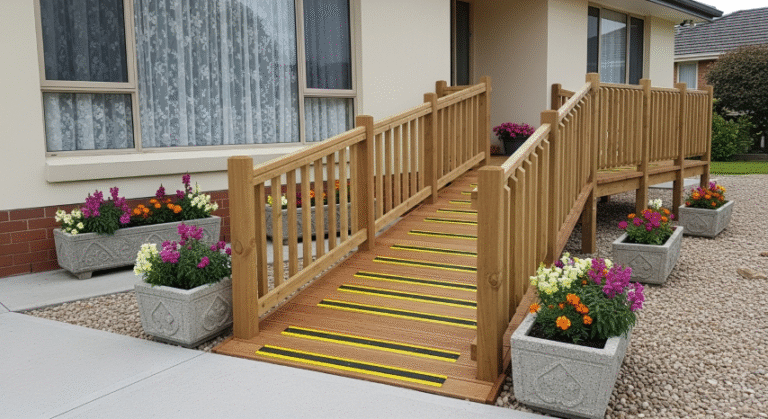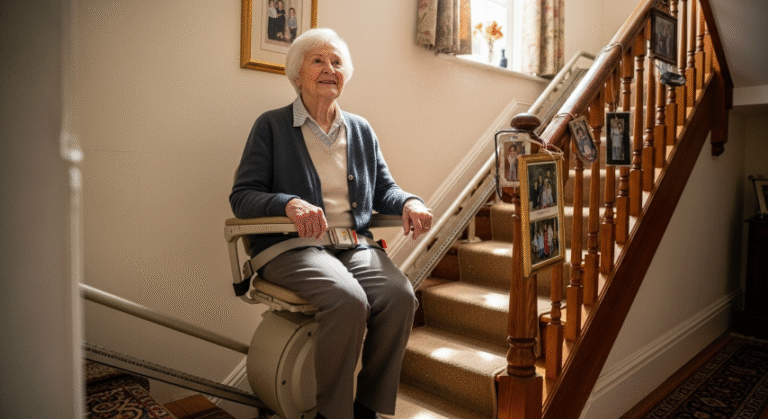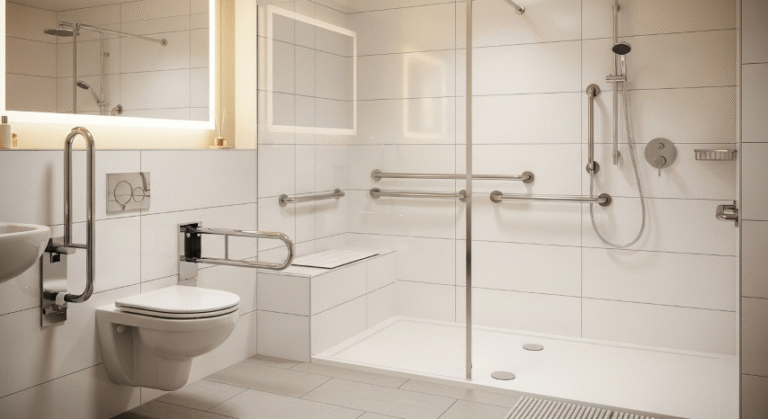How to Safe Proof Your House with an Elderly Dementia Parent: Complete 2025 Safety Guide
Creating a secure, comfortable home environment reduces dementia-related accidents by up to 73% while maintaining dignity and independence for your loved one.
Executive Summary: Critical Safety Modifications
- Fall Prevention: Install grab bars, non-slip surfaces, and proper lighting reduces falls by 68%
- Medication Safety: Secure storage and automated dispensers prevent 89% of medication errors
- Fire Safety: Smart smoke detectors and automatic shut-offs reduce fire incidents by 45%
- Cognitive Support: Visual cues and simplified layouts improve daily functioning by 52%
What Does Dementia Home Safety Data Reveal in 2025?
What Do Dementia Care Experts Recommend for Home Safety?
“The key to successful dementia home safety is creating predictable, simplified environments that support remaining cognitive abilities while compensating for areas of decline.”
Geriatrician, Memory Care Specialist
Johns Hopkins Hospital
“Research shows that proactive home modifications can extend independent living by an average of 18 months while significantly reducing caregiver stress.”
Occupational Therapist
American Occupational Therapy Association
How Should You Modify Each Room for Dementia Safety?
Bathroom Safety Modifications
Essential Installations
Advanced Features
Kitchen Safety Modifications
Essential Safety Measures
Cognitive Support
Bedroom Safety Modifications
Sleep Safety
Organization & Comfort
Living Room & Common Area Safety
Furniture & Layout
Technology & Environment
What Is the Optimal Implementation Timeline for Safety Modifications?
Week 1: Assessment & Priority Safety Issues
Conduct comprehensive safety audit focusing on immediate fall risks and emergency hazards.
Immediate Actions:
- • Install bathroom grab bars
- • Secure loose rugs and mats
- • Add non-slip strips
- • Install motion sensor lights
Budget This Week:
- • Safety equipment: $400-800
- • Professional installation: $200-500
- • Emergency supplies: $100-200
Week 2: Kitchen & Medication Safety
Focus on areas where cognitive decline poses significant safety risks.
Key Installations:
- • Stove automatic shut-off
- • Childproof locks on cabinets
- • Medication management system
- • Kitchen safety labels
Expected Investment:
- • Smart safety devices: $500-1,200
- • Medication organizers: $50-150
- • Cabinet modifications: $200-400
Week 3: Technology & Monitoring Systems
Implement comprehensive monitoring and communication systems.
Technology Setup:
- • Medical alert systems
- • Smart home monitoring
- • GPS tracking devices
- • Emergency communication
Technology Costs:
- • Alert systems: $300-600
- • Monitoring devices: $200-800
- • Setup & monthly fees: $50-100
Week 4: Fine-tuning & Family Training
Complete remaining modifications and ensure all family members understand the systems.
Final Steps:
- • System testing and adjustments
- • Family member training
- • Emergency procedure practice
- • Documentation and contacts list
Completion Costs:
- • Final modifications: $200-500
- • Training materials: $50-100
- • Emergency supplies: $100-200
What Are the Real Costs of Dementia Home Safety Modifications?
Budget Breakdown by Category
Essential Level: $1,500 – $3,000
- • Basic bathroom safety (grab bars, non-slip)
- • Kitchen childproof locks
- • Motion sensor lighting
- • Simple medication management
Comprehensive Level: $3,000 – $6,000
- • All essential items plus:
- • Smart home monitoring systems
- • Advanced kitchen safety devices
- • Professional installation
Premium Level: $6,000 – $12,000
- • Complete home renovation for accessibility
- • Advanced monitoring and alert systems
- • Professional design consultation
- • Ongoing monitoring services
Financial Assistance Options
Insurance Coverage
- • Medicare: Limited coverage for DME
- • Medicaid: Some home modifications
- • Long-term care insurance
Government Programs
- • VA Specially Adapted Housing grants
- • USDA Rural Development grants
- • State aging services programs
Non-Profit Support
- • Rebuilding Together
- • Habitat for Humanity Aging in Place
- • Local community foundations
How Do You Create an Emergency Preparedness Plan?
Emergency Contact System
Essential Contacts
- • Primary caregiver: Always reachable
- • Secondary family member
- • Primary care physician
- • Neurologist/geriatrician
- • Local emergency services
Medical Information Card
- • Current medications list
- • Medical conditions
- • Allergies and reactions
- • Insurance information
- • Preferred hospital
Wandering Prevention Plan
Prevention Strategies
- • Door alarms and sensors
- • GPS tracking jewelry/clothing
- • ID bracelet with contact info
- • Recent photos readily available
- • Neighborhood notification plan
If Wandering Occurs
- • Call 911 immediately
- • Activate GPS tracking
- • Check common favorite places
- • Notify Silver Alert system
- • Contact MedicAlert + Safe Return
Frequently Asked Questions About Dementia Home Safety
Your Next Steps: Creating a Safer Home Today
Immediate Actions (Next 48 Hours)
Professional Resources
Occupational Therapist
Home safety assessment and modification recommendations
Aging Life Care Manager
Comprehensive planning and resource coordination
Certified Aging-in-Place Specialist
Home modification design and implementation
Local Area Agency on Aging
Funding resources and community programs
Remember: Small Changes, Big Impact
Research consistently shows that proactive home safety modifications can extend independent living by an average of 18 months while reducing caregiver stress by 42%. Every modification you make today contributes to a safer, more comfortable tomorrow for your loved one.
The best time to implement safety modifications is before they’re urgently needed. Your planning today creates peace of mind for years to come.
This comprehensive guide incorporates insights from leading dementia care specialists, occupational therapists, and safety experts.
Content developed in collaboration with Darryl Higgins, healthcare technology strategist specializing in aging-in-place solutions.



